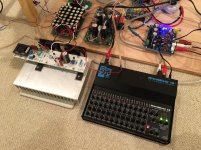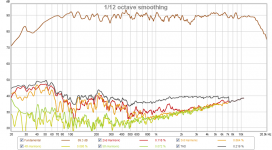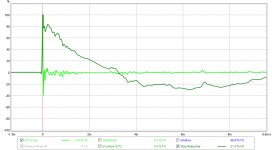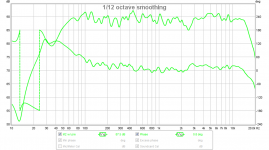Jay,
When you say VSSA1b you mean you are listening to clips from my JK VSSA amp?
Yes. You uploaded 2 files regarding the VSSA. I'm not sure about the reason. May be there was something wrong with the first upload? Did I write "VSSA1b"? If so, "1" is the clip number and "b" is the second upload. But I used clip#3...
Jay,
No, you actually wrote VSSAb, so my typo. Good to know that it refers to JK VSSA playing clip #3.
I wonder if a conventional woofer soft dome tweeter with 2nd order XO might be good to record a sound clip between JK VSSA, CFH7, and FX8 Bimo?
No, you actually wrote VSSAb, so my typo. Good to know that it refers to JK VSSA playing clip #3.
I wonder if a conventional woofer soft dome tweeter with 2nd order XO might be good to record a sound clip between JK VSSA, CFH7, and FX8 Bimo?
I wonder if a conventional woofer soft dome tweeter with 2nd order XO might be good to record a sound clip between JK VSSA, CFH7, and FX8 Bimo?
Hmmm... why, what is the reason? I think as long as the measurement is good, any speaker is okay. Some speaker may be a difficult load for some amps, but the amps are not tube amp or simple class-A designs. With conventional 2-way, may be it is even harder to get a good phase response?
Definitely the phase and impulse/step on 2-way with dome won't be as good. What it has is reach above 20kHz for sparkling highs of that's important to you. I guess this current speaker is actually quite a good neutral speaker with excellent phase response and crisp temporal dynamics.
Definitely the phase and impulse/step on 2-way with dome won't be as good. What it has is reach above 20kHz for sparkling highs of that's important to you. I guess this current speaker is actually quite a good neutral speaker with excellent phase response and crisp temporal dynamics.
No, sparkling highs (whatever that means) is not that important. I didn't listen to the highs in the clips. One item that I listen to is the "pitch", "rhythm" when certain instrument plays a fast musical passage. It's like when you strum a set of guitar strings or move your fingers from key to key on a piano, you want the transfer of force from your finger to produce a "smooth" musical sound... In this test, CFH7 and FX8 are good.
I'm curious about the "softness" in the CFH7. Is it recorded separately than the other files??
CFH7 was recorded in same way, with same source, DAC, speaker, mic, etc. Only amp was different. I also set the sound levels to be the same with an SPL meter. I just finished building a Pass M2 (JFET input, autoformer voltage gain, zero feedback class A 25w) and listening to it now. Will post sound clips for it later once I get it dialed in.
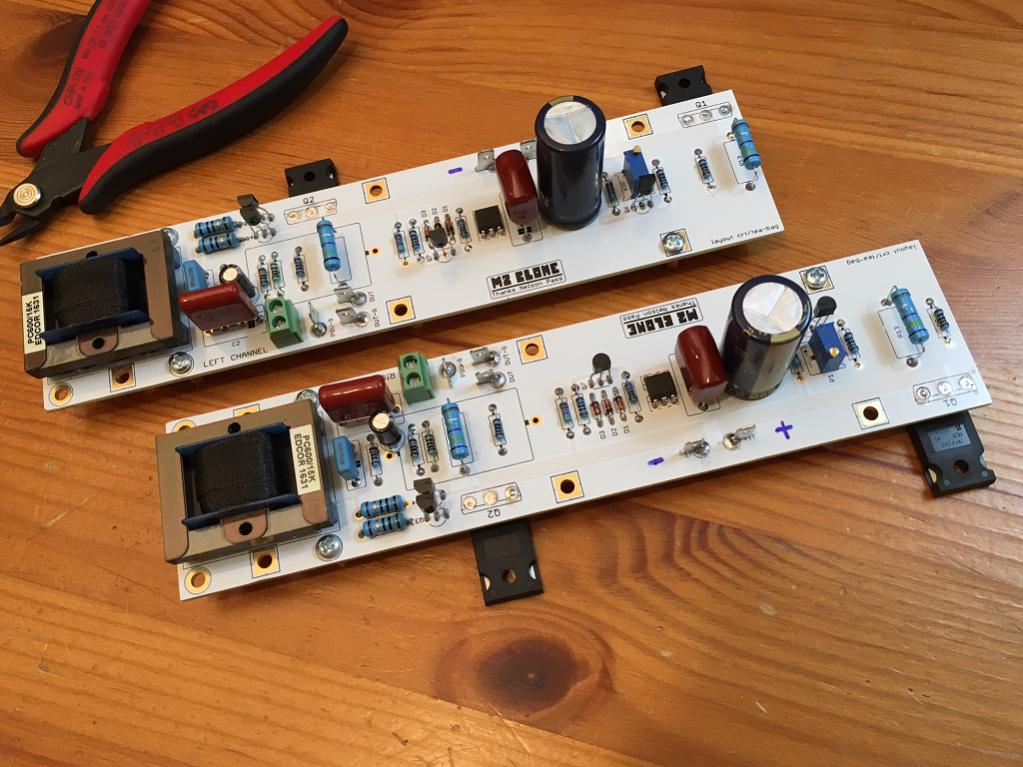

Last edited:
CFH7 was recorded in same way, with same source, DAC, speaker, mic, etc. Only amp was different. I also set the sound levels to be the same with an SPL meter.
I would guess that many of the imperfections in the preparation (preamplifiers not warmed up, power line irregularity, door/window being opened/closed, etc) will affect the quality of the sound clip. One way to reduce these imperfections is by recording at the same time.
I just finished building a Pass M2 (JFET input, autoformer voltage gain, zero feedback class A 25w) and listening to it now. Will post sound clips for it later once I get it dialed in.
Looking forward to listening to this legendary amp! 🙂 Let's see how bad it will handle your speaker compared to the other amps. Many thanks, for this will enable me to understand or hear clearly what makes class-A amps so different

I just finished building a Pass M2 (JFET input, autoformer voltage gain, zero feedback class A 25w) and listening to it now. Will post sound clips for it later once I get it dialed in.
Hi x,
Where did you find the M2 clone boards and transformers?
Thanks.
Hi x,
Where did you find the M2 clone boards and transformers?
Thanks.
They are a group buy by Teabag. He provided both PCB and transformer.
http://www.diyaudio.com/forums/grou...2-clone-boards-120mm-ums-spacing-tea-bag.html
It's a great 2oz copper board. Extremely high quality and easy to solder.
M2 Sound Clips
I got the DC offset problem sorted out with change of R7 to 53.5k + 3.3k for 56.8k and range works well so pot can go positive or negative around 0vdc. I also changed the main 10uF DC blocking cap that sits between the autoformer and the output stage to be the same as what I use on the other amps: a no name 10uF 50v MLCC and a CBB 1uF 450v MKT bypass. I did not want a difference in coupling caps to be a cause of sonic differences. However, I could not keep the signal chain identical as Pass amps are typically 14dB gain. This one is no different and my DAC simply cannot drive a volume greater than about 85dB. I added a fairly transparent pro-grade preamp (midiman micromixer 18) via an 18 channel mixing console with gain. Now I am getting some nice appreciable volume and bass that can be felt. In anycase, you will hear sound clips that are not of an identical signal chain as previous clips. Maybe I have to re-record at least one other amp so you can get a sense what sonic impact this has. Measurements show it is transparent with no real added HD or change in frequency response.
Here is a photo of the setup:
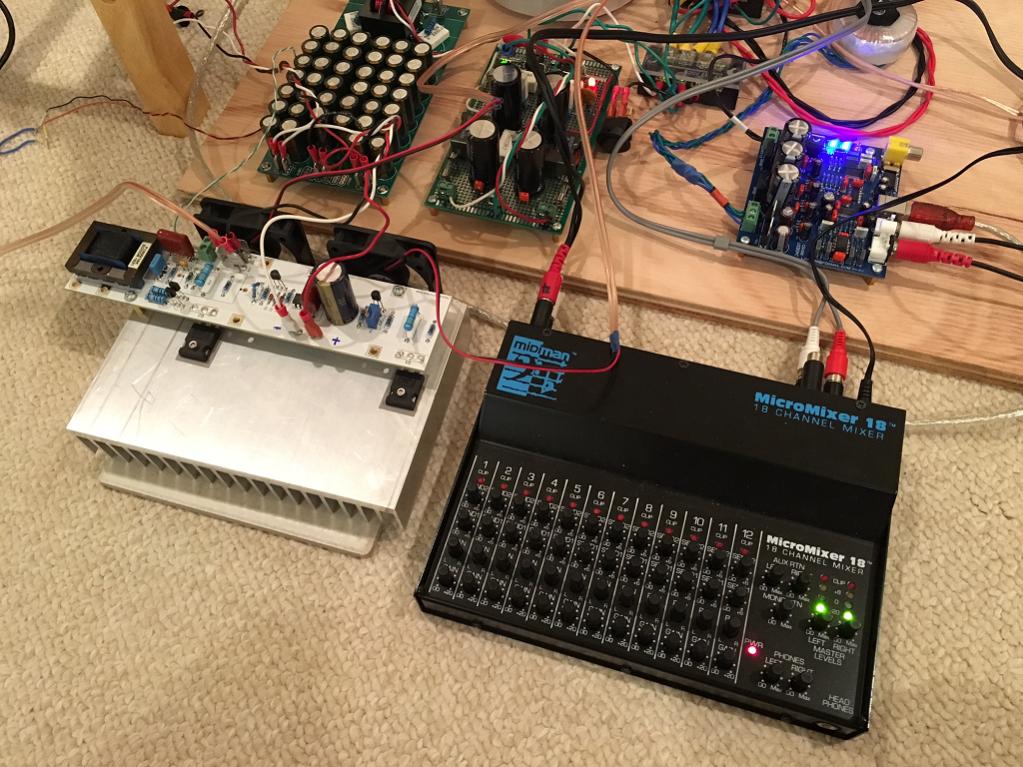
I won't show measurements yet as to not bias your listening impressions.
Soundclip files need to be renamed to .mp3 extension to listen.
So there you have it - the sound of a pure class A amp with zero feedback and passive voltage gain via an autoformer. What is good is that it is in-family with many of the other amps here as the output stages are the Vishay IRFP240/9240, here running at 1.3amp bias vs typical 80mA to 180mA bias of the other amps. Of course, this amp required different rail voltages (25v) and more capacitance in the PSU as it draws a lot of steady current.
I got the DC offset problem sorted out with change of R7 to 53.5k + 3.3k for 56.8k and range works well so pot can go positive or negative around 0vdc. I also changed the main 10uF DC blocking cap that sits between the autoformer and the output stage to be the same as what I use on the other amps: a no name 10uF 50v MLCC and a CBB 1uF 450v MKT bypass. I did not want a difference in coupling caps to be a cause of sonic differences. However, I could not keep the signal chain identical as Pass amps are typically 14dB gain. This one is no different and my DAC simply cannot drive a volume greater than about 85dB. I added a fairly transparent pro-grade preamp (midiman micromixer 18) via an 18 channel mixing console with gain. Now I am getting some nice appreciable volume and bass that can be felt. In anycase, you will hear sound clips that are not of an identical signal chain as previous clips. Maybe I have to re-record at least one other amp so you can get a sense what sonic impact this has. Measurements show it is transparent with no real added HD or change in frequency response.
Here is a photo of the setup:

I won't show measurements yet as to not bias your listening impressions.
Soundclip files need to be renamed to .mp3 extension to listen.
So there you have it - the sound of a pure class A amp with zero feedback and passive voltage gain via an autoformer. What is good is that it is in-family with many of the other amps here as the output stages are the Vishay IRFP240/9240, here running at 1.3amp bias vs typical 80mA to 180mA bias of the other amps. Of course, this amp required different rail voltages (25v) and more capacitance in the PSU as it draws a lot of steady current.
Attachments
Last edited:
Fatiguing due to nonlinear distortion or excessive mids/highs? Most reviewers say it is soft. This amp has a different distortion harmonic profile due to the autoformer.
Here is measured response vs CFH7 with and without pre-amp:
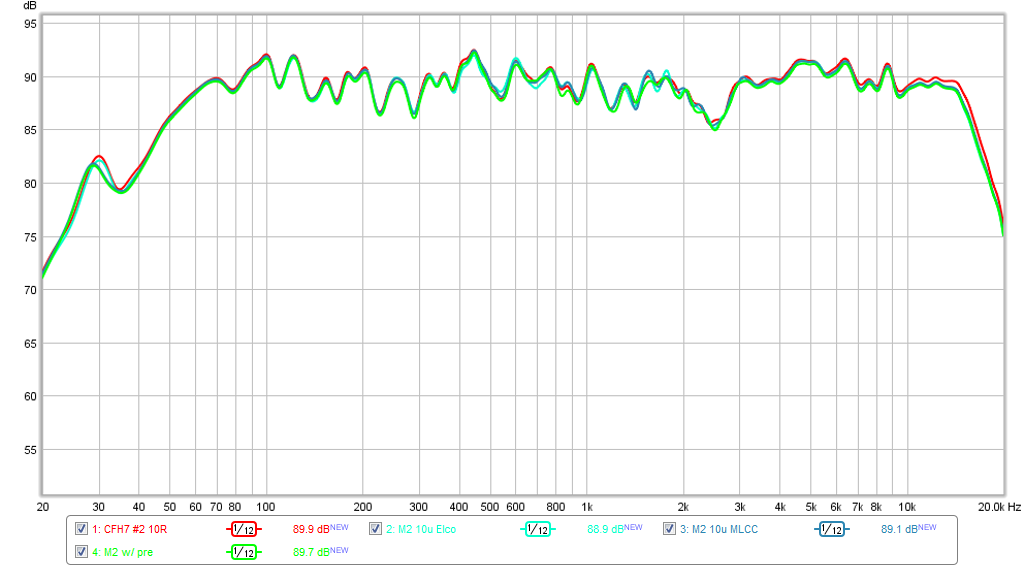
Here is measured harmonic distortion, note increased level of HD in bass region vs previous amps and also a bit more 3rd harmonic bumps:
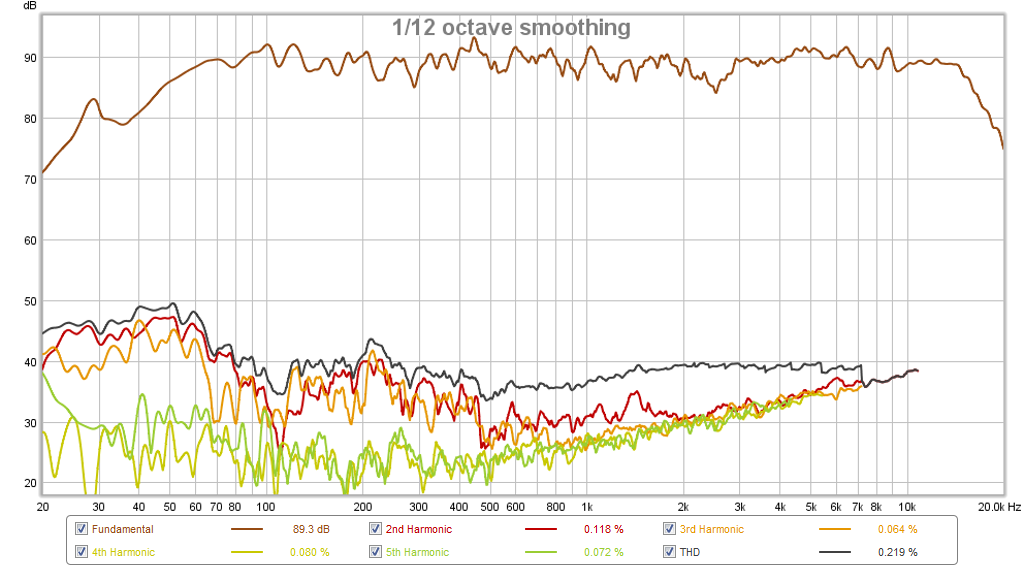
Here is measured impulse and step:
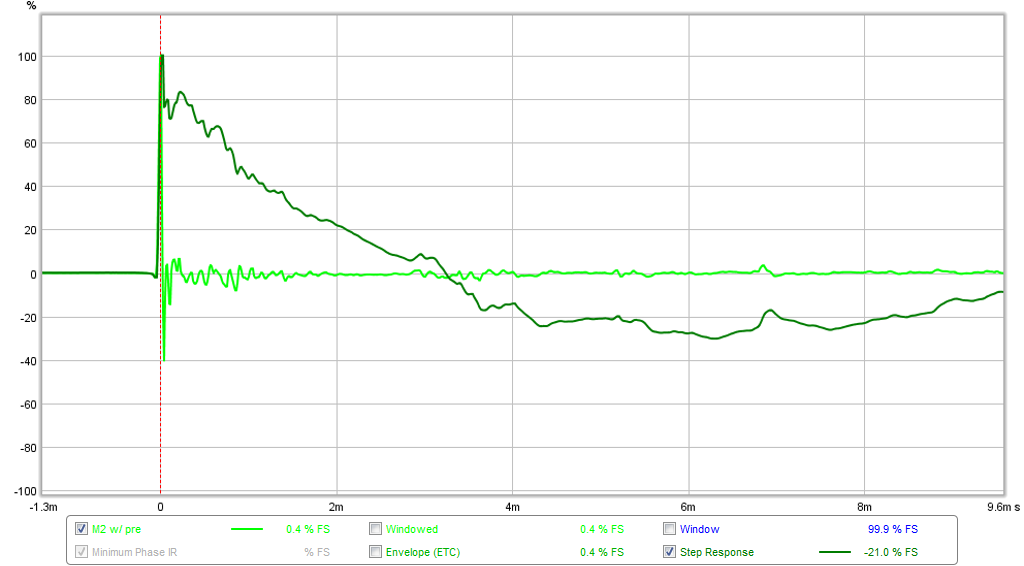
Here is measured frequency response and phase:

Not sure what happened to clip 1, here it is below.
Here is measured response vs CFH7 with and without pre-amp:

Here is measured harmonic distortion, note increased level of HD in bass region vs previous amps and also a bit more 3rd harmonic bumps:

Here is measured impulse and step:

Here is measured frequency response and phase:

Not sure what happened to clip 1, here it is below.
Attachments
Last edited:
Fatiguing due to nonlinear distortion or excessive mids/highs?
Again, I didn't pay attention to highs. I'm not sure if there is excessive highs here especially when there is transformer at the input. Fatigue is easily felt when there is bass impact so it is at low frequency...
Excessive mid is I think the signature of probably all simple class-A amps. Second order distortion makes the sound (especially vocal) "bigger", which needs prolonged listening (within 10 minutes for me) to perceive it as distortion.
Most reviewers say it is soft.
"Soft". No convention for the meaning of that term. I think probably "soft bass" due to low damping?
This amp has a different distortion harmonic profile due to the autoformer.
I don't know what the transformer can do to the harmonic profile. From experience listening to transformers, they are fatiguing as if producing more 3rd distortion than 2nd...
I have heard opinions (and had supporting little experience) that transformer must be of high quality to avoid the obvious sonic disadvantage. I have 6 big output transformers (size of 5A EI transformer) and 6 input transformers and have no use for them because I don't like the sound.
The dominant distortion is indeed H3 due to the transformer as pointed out by Pass in the user's manual with scope trace showing 3f sine vs 1f input. It's the signal trafo that you don't like then. In general, 3H is more egregious than 2H so not sure why so many people like all the transformers that tube amps require. The Edcor used here, although not expensive is thought to be the same as the OEM one on the M2. One other possibility is the P channel MOSFET. The PCB layout and GB by Teabag - he says that avoid the Vishay IRFP9240 and use one from different manufacturer. The sound signature is harsh with the Vishay. Fairchild FQ series may improve things some?
I think when you record rock or metal style music through M2, you will hear it lacks detail, resolution and speaker control. On this simple kind of music you will not notice much.
Best overall amplifier from Firstwatt for all kind of music is F5. But to me properly done class AB amplifier sound same or better than F5.
Best overall amplifier from Firstwatt for all kind of music is F5. But to me properly done class AB amplifier sound same or better than F5.
you can distinguish what is the amplifier in a blind test ?
Thiago
I can't do it very well but "Mr. Goldenears" Jay probably can 🙂
You can try yourself by putting same clip for 5 different amps in playlist and click random play. Try to pick out amps by listening without looking at playlist.
You can try yourself by putting same clip for 5 different amps in playlist and click random play. Try to pick out amps by listening without looking at playlist.
This way it will be very difficult for most people because this requires long-term memory (but it will detect what is undetectable in short listening). Easier is using short-term memory, so you need only to hear/compare short clips...
But for each set of devices under tests (DUTs), the location of critical differences is different from set to set. So two DUTs is easier than five.
The main reason it is easy to differentiate 2 DUTs in short listening is because FR is never flat. At some frequency the difference will be too big/obvious. It is then important to be able to find this critical frequency quickly, or by "sweeping" the entire clip.
But using clips posted here in short-term ABX is not proper because we can cheat. This is because the starting of the music is different from clip to clip, so at certain position in time, one clip may produce sound and the other may not (so a huge different in FR or level).
As you can see, and what many people don't understand is that listening is not (just) about ears, so the knowledge/skill is transferable to some extent. There is big difference between what we don't know and what we can't do.
Good points there Jay. You are right, when I really try to do comparison between 2 I listen to a short 5 second sound clip.
Listening to driver comparisons it's easier to pick out than amps.
Btw, what is your opinion of the amps here in this lineup vs commercially available amps? Are DIY designs like the FX8 Bimo that you like so much better than a typical $600 to $800 commercial amplifier?
Listening to driver comparisons it's easier to pick out than amps.
Btw, what is your opinion of the amps here in this lineup vs commercially available amps? Are DIY designs like the FX8 Bimo that you like so much better than a typical $600 to $800 commercial amplifier?
- Status
- Not open for further replies.
- Home
- Amplifiers
- Solid State
- Virtual Audition of Very Simple Quasi MOSFET Amp
